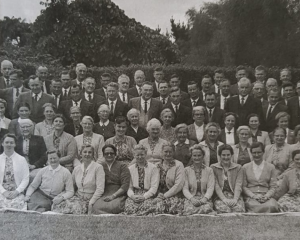The scientists, working with colleagues throughout New Zealand and abroad, are investigating how earthquakes are generated on the Alpine Fault, the South Island's largest and most dangerous fault.
The proposed "Deep Fault Drilling Project" involves a range of geological and geophysical research that will eventually include drilling a hole, several kilometres deep, in the fault, to penetrate the zone where earthquake processes occur.
The Alpine Fault extends for more than 650km from south of Fiordland, through Milford Sound and into Marlborough.
It is one of the world's major active faults and is visible from space.
One of the project leaders, Dr John Townend, of Victoria University in Wellington, said an earthquake of about magnitude 8 on the Alpine Fault could strike this century.
There was a compelling case to install instruments at depth to better understand the South Island's most dangerous fault, he said.
Otago University scientists say that a similar-sized earthquake, centred, for example, about 25km south of Franz Josef township, on the West Coast, would leave that township "devastated".
In Dunedin, resulting ground subsidence could cause moderate to severe damage to many buildings in industrial areas and low-lying suburbs, with hill suburb houses receiving only moderate damage.
Queenstown, much closer to the quake's epicentre, would experience "huge avalanches, rock falls, landslides and strong ground shaking", scientists said.
Many large buildings in Queenstown could receive extensive structural damage and have to be demolished, the scenario envisaged.
The West Coast's lucrative tourist industry would also be badly affected, with extensive damage cutting off the alpine passes and highways which enabled most visitors to reach the area.
Otago University geologists, Otago graduates and scientists from GNS Science in Dunedin were among 65 scientists from seven countries who attended a recent workshop at Franz Josef to discuss the proposed long-term projectThe workshop was backed by funding from the International Continental Scientific Drilling Programme, which supports major scientific drilling projects in several countries.
Emeritus Prof Richard Sibson, Prof Richard Norris and Dr Virginia Toy, of the Otago University geology department, are part of the project's steering committee, with other departmental members, including Prof Alan Cooper, Prof Dave Craw, and Dr Andrew Gorman, also involved in the project.
Dr Simon Cox and Dr Phaedra Upton, both Otago geology graduates, are among Dunedin GNS Science staff also participating.
Dr Townend, and another project leader, Dr Rupert Sutherland, of GNS Science, Wellington, are also Otago graduates.
Organisers said the project also involved a nationwide effort by scientists from other universities and by GNS researchers.
Dr Toy said that the massive uplifting of rocks on the eastern side of the Alpine Fault gave "a window into the crust"-providing unusually good insights into that part of the crust where earthquakes were generated.
"The research is large-scale. It's attempting something very ambitious and for that reason it's exciting," Dr Toy said.
Better understanding earthquake processes would help to better protect New Zealanders from future quakes, she said.












